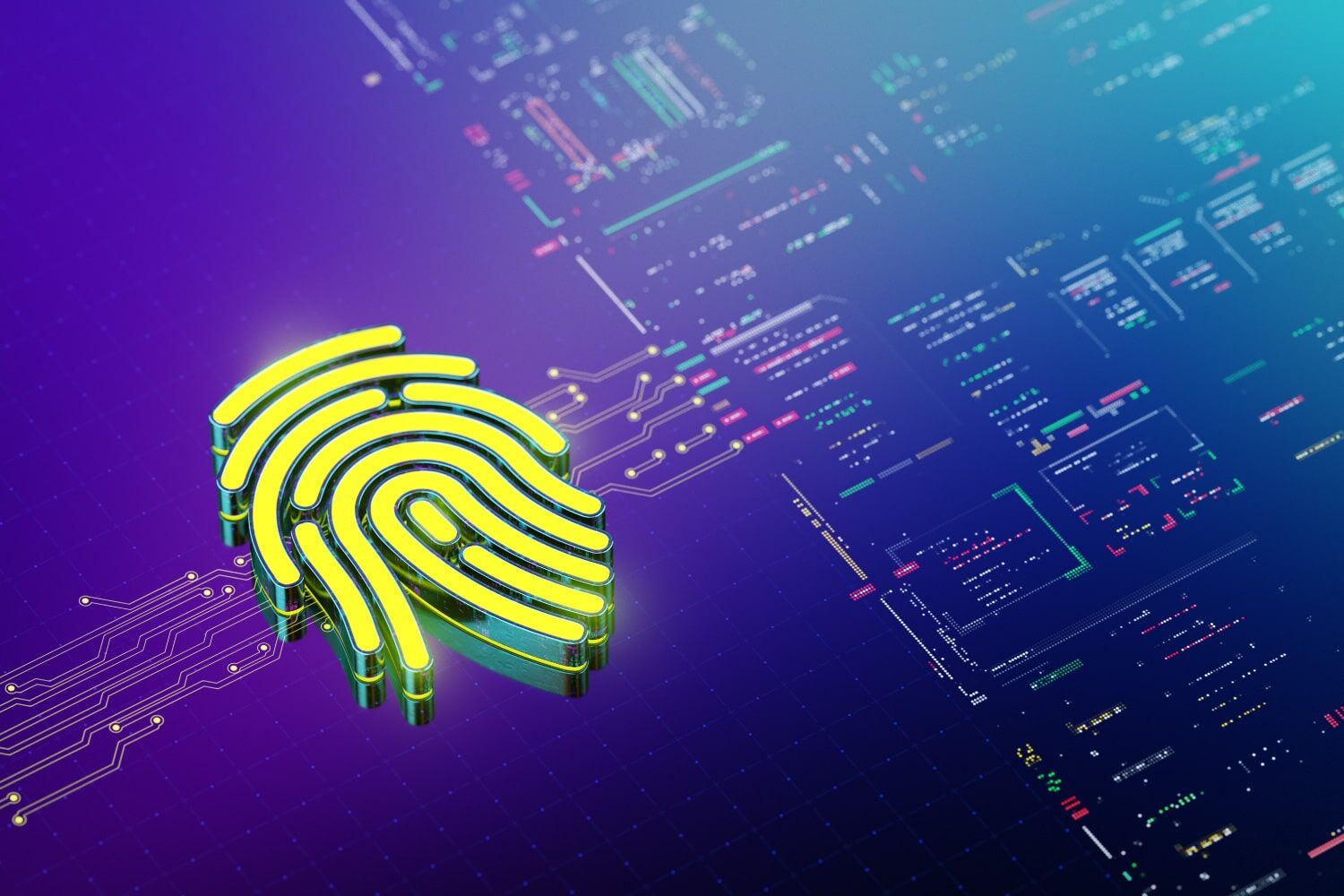Today, 5.5 billion people are online. Assuming you’re one of those many billions and have used some technology in the last decade, you’ve most likely been exposed to a cyber scam more than once. Whether it’s the CEO who needs gift cards ASAP or a prince from a distant land who promises you incredible riches, at this point, you’re probably pretty good at spotting them.
Or so you think…
As AI is making it easier for hackers to blend in, scams are getting tougher to identify. That’s why in this blog, we’re covering the common scams, how AI is influencing them and how you can spot them to protect yourself.
Phishing and Vishing Scams
Phishing scams are common fraudulent attempts to obtain sensitive information like usernames, passwords, and credit card details by masquerading as trustworthy sources in electronic communications. Vishing, or voice phishing, involves scammers making phone calls pretending to be from reputable companies or government agencies to achieve the same goal—collecting personal and financial information.
With generative AI, the once obvious red flags, like typos and disjointed or out-of-character messages, aren’t as obvious anymore. Cybercriminals can easily make more believable attempts to nab your credentials and, with the right data, create messages that mimic the individual they’re impersonating. This newfound ability can also help hackers get beyond traditional security filters that rely on those same known phishing patterns.
But wait, it gets worse!
Hackers can now download thirty seconds of audio from a video or podcast, run it through a machine learning system and generate an incredibly accurate imitation of someone’s voice. This allows cybercriminals to create realistic voicemails that could instruct you to make payments, transfer cash, or follow other potentially harmful directions.
Protecting Yourself from Phishing and Vishing: Always scrutinize the sender’s email address, ensuring it matches previous communications you’ve had with that person. Exercise caution with links and attachments by hovering over them for more information before clicking. Watch for signs of urgency or pressure tactics and always verify the source of any communication before sharing sensitive information. If an email seems off, consider reaching out through a different method—such as a phone call—to confirm they truly sent it.
Remote Access Scams
Remote access scams involve criminals tricking victims into granting them remote access to their computers or devices by using a common method we’ve mentioned before, impersonating trusted or well-known entities (banks, internet providers, the IRS, Microsoft, Google, Amazon, etc.). Once access is gained, scammers can steal personal data, install malware, access financial accounts and even lock individuals out of their own devices.
Scammers now use AI-generated scripts and chatbots to sound more professional and convincing during initial contact, whether by phone, email, or pop-up alerts. Some even deploy AI voice cloning to impersonate tech support agents from trusted companies. AI can also help scammers mimic legitimate websites or error messages, making fake alerts look indistinguishably real.
Protecting Yourself from Remote Access Scams: Be cautious of any unsolicited calls or emails that request remote access to your devices or ask for personal information. Much of the advice that applies to phishing and vishing also holds true here. Trust your instincts; if something feels off, it probably is. Don’t hesitate to push back and see how the individual reacts. Many will respond with frustration or anger, and some might even resort to intimidation tactics to exploit your fears and create a sense of urgency—such as threatening legal action. If you ever feel a situation is suspicious, it’s best to hang up, reach out to the company’s official support line, and report the interaction if you can.
For a bit of entertainment and a great example of someone skillfully (and hilariously) handling scammers, check out this clip!
Ransomware
Ransomware is malicious software that locks down your files, systems and networks and involves paying a requested amount of money (a ransom) to regain access. Some even threaten data exposure, which for companies that keep confidential information or are HIPPA compliant, can be massively detrimental.
AI-powered ransomware attacks can now use machine learning to scan social media, company sites, public records, and other sources to find people and businesses to target. Plus, AI helps these attacks change on the fly to avoid being caught.
Protecting Yourself from Ransomware: Implementing a multi-layered security strategy is key. Start by regularly backing up your data to an offline or cloud storage solution, ensuring you can restore files without paying a ransom. Keep your operating systems, software, and antivirus programs up to date to defend against known vulnerabilities. Educate your employees on identifying red flags, such as unexpected emails containing attachments or links, or unusual requests for sensitive information.
Emergency and Romance Scams
Emergency and Romance scams are especially dangerous because they prey on emotions and urgency. Emergency scams exploit people’s desire to help loved ones pretending to be friends or family in crisis (ex. jail, hospital, stranded abroad) and in urgent need of financial assistance. Romance scams involve scammers creating fake profiles on dating sites or social media to establish romantic relationships and gain trust with victims, eventually asking for financial help.
It’s easy to wonder how anyone could fall for these scams, but they’re strategically designed to bypass logical thinking and trigger emotional responses. With online dating being a popular mode of finding companionship, unfortunately, you just never know who’s on the other side. Imagine someone you love calls you crying, saying they’re in trouble and need help, or finding someone who finally makes you feel seen and valued after years of loneliness. Wouldn’t you want to help? When emotions are high, critical thinking can end up on the back burner.
They use sophisticated tactics with the help of AI to increase their believability using things like AI-generated profile pictures, voice cloning technology and social media mining to gather information on their victims or to impersonate their loved ones.
Protecting Yourself from Emergency and Romance Scams: First, it’s important not to move too fast or act on emotions (easier said than done sometimes). Keep an eye out for friend requests or messages from people you’ve never met before, and never send or wire money to strangers. Try to poke holes in stories and see if they can keep them straight. Avoid video or phone calls when possible and always validate the caller if something seems off by hanging up and calling them directly or asking questions only that person would know.
These scams don’t just target the gullible. They target the lonely, grieving, generous, and trusting. These are human traits, not flaws. We just have to be careful!
Donation Request or Disaster Relief Scams
Disaster relief scams exploit people’s generosity during crises—like natural disasters, humanitarian emergencies or global tragedies. These scammers pose as legitimate charities or relief organizations to solicit fake donations, often using emotional appeal and urgent messaging to pressure victims into giving (a common theme).
Much like the other scams, AI is helping these efforts seem more convincing and harder to detect. With AI-generated websites and emails, deepfake videos, social media bots, data scraping and more, these attempts can look legitimate to the untrained eye.
Protecting Yourself from Disaster Relief Scams: Scammers often rely on urgency and emotion to trick people into donating to fake causes. Be cautious of high-pressure appeals like “Act now to save lives!” or vague claims that can’t be verified. Poor grammar, spelling mistakes, and requests for donations via gift cards, wire transfers, or cryptocurrency are all major red flags. Legitimate charities will always provide clear contact information and a registered tax ID.
To stay safe, take a moment to verify any organization before donating. Use trusted resources like Charity Navigator or Give.org to confirm legitimacy. Avoid clicking on links in unsolicited messages—go directly to the charity’s official website. When you do donate, use secure payment methods like credit cards or PayPal, and look for transparency about how your contribution will be used.
Stay Informed and Stay Cautious
As scams continue to evolve, so must our awareness. Today’s scammers aren’t just relying on old tricks, they’re leveraging powerful AI tools to create more convincing, personalized, and emotionally manipulative schemes. From phishing emails written by language models to deepfake voices mimicking loved ones, the line between real and fake is getting harder to spot.
But here’s the good news: staying safe doesn’t require paranoia—it just takes awareness. By learning the red flags, verifying sources, and taking a moment to pause before acting, you can protect yourself and your loved ones from even the most sophisticated scams. Share what you’ve learned, stay curious, and remember – a little skepticism can go a long way in an online world full of deception.
Scammers adapt quickly—but so do we. If you’re feeling overwhelmed by the pace of tech, we’re here to help.



